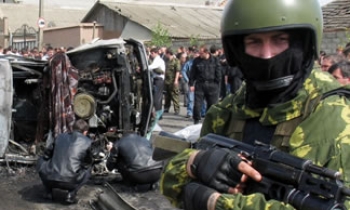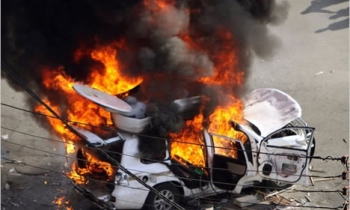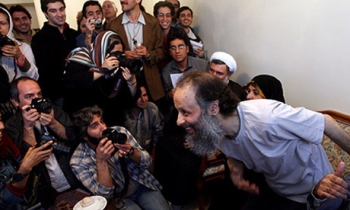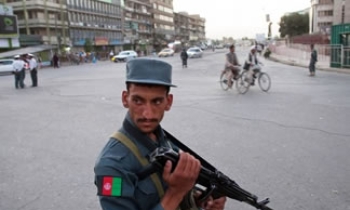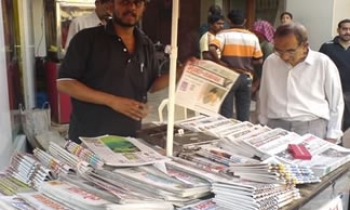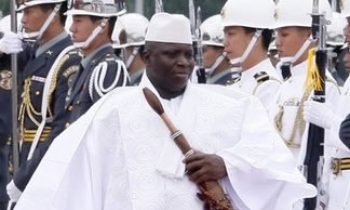Nearly 90 per cent of the journalists killed in the line of duty during President Gloria Arroyo's rule since 2001 were exposing corruption. The rest were killed for reporting on and criticising illegal gambling and the drug trade in their localities.
These are among the findings of the annual report on the state of press freedom released by the Centre for Media Freedom and Responsibility (CMFR) on October 11. The CMFR study —“Press Freedom Report 2007†— is the second it has issued since the killing of journalists accelerated during the Arroyo rule.
Thirty-three journalists have been killed in the line of duty since 2001, while 20 others were killed because of non-media related causes. Of those killed in the line of duty, 29 were exposing corrupt government practices in their home provinces or illegal activities such as drug trafficking and gambling. Government personnel such as police officers and local government officials have been identified as the prime suspects in nine of these cases.
A case in point is that of broadcaster Roger Mariano of Laoag, Ilocos Norte. The murder case against Mariano’s killers is pending at a Manila Regional Trial Court (RTC). The primary suspects are Senior Police Officer Apolonio Medrano and his alleged accomplice, Basilio Yadao. Medrano was a member of the Philippine National Police Criminal Intelligence and Detection Group and was assigned at the Cordillera Autonomous Region at the time of Mariano's death. Mariano, 44, was one of the most critical broadcasters in Ilocos Norte. Local officials feared being the subject of Mariano's hardhitting remarks in his popular programme.
"Roger Mariano in Action" was aired over dzJC Radyo Natin-Aksyon Radyo. Mariano, known as a fearless and critical journalist, started in radio broadcasting in 1990. He would discuss the most controversial issues of the day. More often than not, local officials were the subjects of his broadcasts.
On the night of July 31, 2004, Mariano announced on air that he would be reporting a major story on a corruption scam he had uncovered in his next broadcast. Mariano never got the chance to do so; he was killed the same night. He was gunned down by unknown assailants while riding home on his motorcycle after his radio programme. He was shot several times in the back and head.
Mariano was wearing a trademark belt bag that contained a disk with information about alleged scams in a local electric company. His belt bag was missing when his body was recovered. Mariano's wristwatch and wallet were untouched.

Dingalan, Aurora-based journalist Philip Agustin had also been writing and publishing reports critical of the local mayor. In the last issue of Starline Times Recorder, Agustin accused Dingalan mayor Jaime Ylarde of misuse of funds, relief goods and logs intended for the rehabilitation of the town, which had been hit by flash floods and landslides in 2004.
The CMFR study found that like Mariano and Agustin, most of those killed worked in the provinces. Even in urban areas in provinces, journalists’ killings are not likely to get the kind of national attention that will press police to investigate them.
Moreover, 10 of the killed journalists were block timers in local radio stations not affiliated with national networks; six other journalists were on the regular staff of local stations; seven dabbled in both radio and print; one of them had stints in both television and radio; only five were purely print journalists, and one was an online news photographer.
Only 11 had current KBP (Kapisanan ng mga Brodkaster ng Pilipinas—Broadcasters’ Association of the Philippines) accreditation, while for had expired accreditation and 13 had no accreditation at all. Another similar characteristic is that most of the murdered journalists did not have academic training in journalism. About 42.4 per cent had college degrees in fields not related to journalism or mass communication. Some 18.2 per cent did not finish college, 12.1 per cent only finished high school; and 24.2 per cent did not have any available record of their educational attainment. Only 3 per cent had college degrees related to mass communication. Twelve had attended short courses and training programmes conducted by KBP and other media organisations.
Internationally, the Philippines is no longer the “most dangerous country for journalists outside a war zone,†a negative distinction the country gained in 2005 and 2006. Russia now has at least 25 per cent more murdered journalists than the Philippines.
But Joel Simon, the Committee to Protect Journalists (CPJ) Executive Director, told CMFR in a recent meeting that the Philippines remains high in his organisation’s ranking due to the culture of impunity that persists in the killing of journalists. He noted that the number of solved cases and actual convictions of journalist’s killers remain extremely low.

According to the study, 15.2 per cent of the cases are currently under trial, 51.5 per cent are still under investigation, 15.2 per cent have been dismissed due to lack of evidence against the suspects, and 12.1 per cent are pending prosecution.
Only one case was successfully concluded in 2006. The murderers of Marlene Esperat (Randy Grecia, ex-Army Sgt Estanislao Bismanos and Jerry Cabayag) were sentenced to life imprisonment after a trial that began in mid-2005 and ended in October 2006.
While Esperat’s killers were convicted, the murder case against suspected masterminds Osmeña Montañer, Department of Agriculture Officer and Estrella Sabay, Accountant, still needs to be reopened after being prematurely dismissed by Judge Francis Palmones of the Tacurong City Regional Trial Court.
The Esperat and Damalerio cases would not have prospered without the efforts of the Freedom Fund for Filipino Journalists, Inc (FFFJ), which assisted government prosecutors by hiring private prosecutors. Established in 2003, FFFJ is a network of media institutions dedicated to raise funds for assistance to journalists under siege and slain victims’ families. It also undertakes press freedom advocacy campaigns. FFFJ is currently overseeing other pending cases of slain journalists besides waiting for convictions in the cases of Philip Agustin, Roger Mariano, and Rolando Ureta this year.
Research on locations of the killings confirmed an already well-known pattern in the modus operandi of the attackers. Most of the killings occurred near the journalists’ place of work or home. This indicates that the murders were pre-meditated, with the assassins studying the daily routines of their victims. CMFR also discovered that news organisations do not provide their staff with guidance on safety as a subject of course.
While there is increasing international pressure to solve extrajudicial killings in the Philippines, the reaction of government in finding real solutions to end the cycle of violence is slow in coming. There is a need for media organisations to make a concerted effort to reduce the violence. Even as CMFR has consistently emphasised that the legitimate exercise of press freedom should never be penalised, but that erring and abusive journalists may be sanctioned through existing means of self-regulation, with lawsuits for libel and slander being the last resort.
But, as the study shows, certain factors contribute to the press’ individual and institutional vulnerability that need to be addressed via ethics and safety training, media accreditation by KBP, continued support for legal defence, and the setting up of Citizen Press Councils around the country to promote press accountability and to provide safe venues for the airing of grievances against erring journalists.

